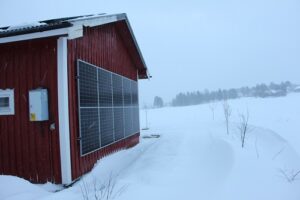Driving in Northern Sweden
If you’re used to driving in another country, like the UK, and you haven’t done lots of driving in other countries then you might have some questions, which I’ll try and cover below:
As an immigrant, is it hard driving on the other side of the road?
No, as long as you are not distracted and are paying attention, and the risks resulting from your automatic responses will reduce over time. Avoid driving when tired, pay attention on narrow country roads with limited visibility, and get passengers to be aware of the risks of distracting you.
My biggest fear at first was that I would “autopilot” onto the wrong side of the road and cause someone else to be injured through my mistake. The only incidents close to this that I’ve had happen in about 3 years of driving were:
- At 03:30 on a winter snowfall night while tired and in pitch-black on an unfamiliar unlit road with no traffic, I pulled left onto the road and realised I was on the wrong side of a middle-barriered road. I immediately pulled off into the U-shaped junction I had come out of and then re-entered the main road correctly. Since then I treat driving when tired as a known risk, to be avoided by other means if possible (e.g. remove the need for the trip if at all possible).
- Approaching an unfamiliar roundabout, while talking to a passenger, I looked to the right instead of the left and almost pulled out. I make a conscious effort to check myself at roundabouts.
- Rounding a 1.5 lane country road, while talking to a passenger, I met another car coming the opposite way and my “autopilot” made me briefly pull the car to the left before I corrected to the right.
Any Special Rules to Be Aware Of?
If you are from the UK, the “right hand rule” is the rule most likely to catch you out. On unmarked roads, roads joining from the right have priority. This sounds like a simple rule but it gets vague and messy and the risk is that you will drive into someone that seemingly (but correctly) pulls out in front of you without warning.
Example 1: Look at the following photo. You are driving on the right hand side of the road, following the road that is curving around to the left. A smaller road is joining from the right. Does a car pulling out from the right have priority over you?
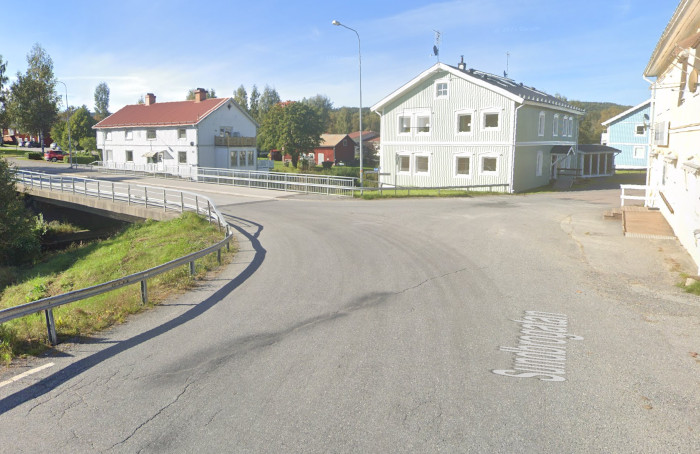
The answer is it doesn’t in this case. Although there are no road markings, there is the grey back of a “give way” sign visible to the right of the lamppost, so the joining traffic is being instructed to give way. Also, not shown in the photo, about 300m before this you would also have gone past a yellow diamond sign, indicating you have priority and the adjoining roads do not. But it’s easy to miss one of these priority signs or to join the road in between yellow notifications.
This differs to the UK where the major/straight road would have priority over the minor road.
Example 2: You are driving along a country road. Look at the photo below, do you see a hazard?
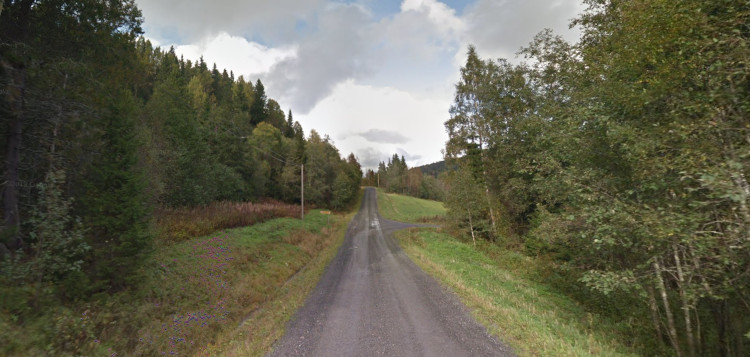
The road joining from the right behind the trees has priority over us and so we need to slow and look and give way to every road like this. We haven’t seen a yellow diamond sign and there is no give way road markings for the side road, nor sign posts telling them to give way.
Again, this differs to the UK where the major/straight road would have priority over the minor roads.
There are some other rules that don’t exist in in the UK, like parking in the direction of traffic, and some parking zones that use alternating days. But locally the first rule gets ignored and for the second, my village/small town doesn’t have parking restrictions. There are also some rules for winter, like that you have to have a snow shovel in your car. You must also carry ID when driving.
Distances
Speeds and distances are metric, in kilometres per hour and kilometres.
Be aware that in Sweden, a “mile” is 10km, as opposed to an imperial mile which would be 1.6km.
As an example of a mixup, someone in a car once stopped and asked me for directions to a nearby town. I knew the town and without thinking properly I used UK distances, telling them the town they wanted was “just 10 miles away”. They looked disgusted at me and immediately drove off. I realized that because of the difference in defining a mile, I’d accidentally implied it was 100km away and they probably thought I was deliberately giving them bad information.
How are Roads Kept Clear in Winter?
In winter the snow can be half a meter overnight. Sweden is generally well prepared and snowploughs travel up and down the main roads, run via the local kommune. The small roads are cleared by local teams using large 9500kg Volvo front loaders. The main clearing is paid via taxes and each year. I get a private bill for about £20 for the local road clearing.
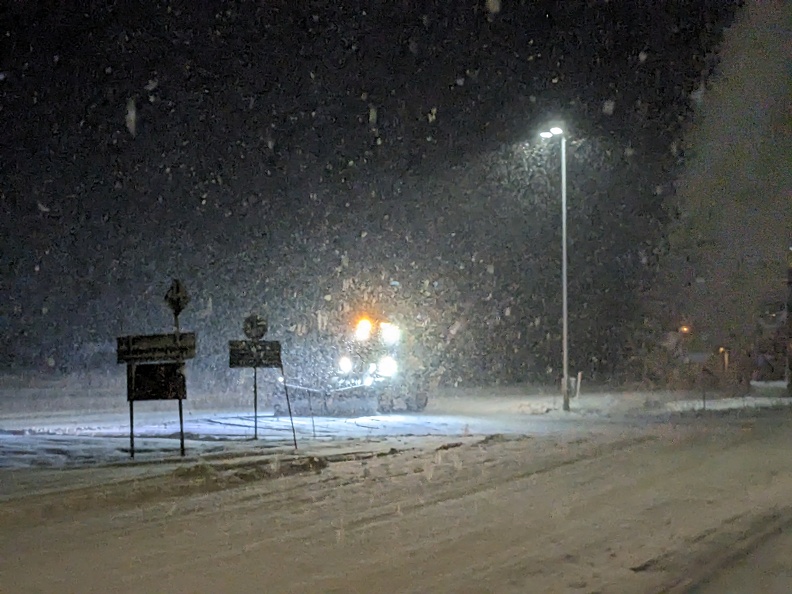
Driveway Clearing
The first year we thought we’d clear the driveway by hand, after all, it’s just a bit of snow. It got to the point where we were taking shifts clearing the snow about 3+ hours a day and losing. The picture below shows the driveway I spent hours clearing, after a snowplough had come past on the main road and reburied everything like a scene from a comedy show.
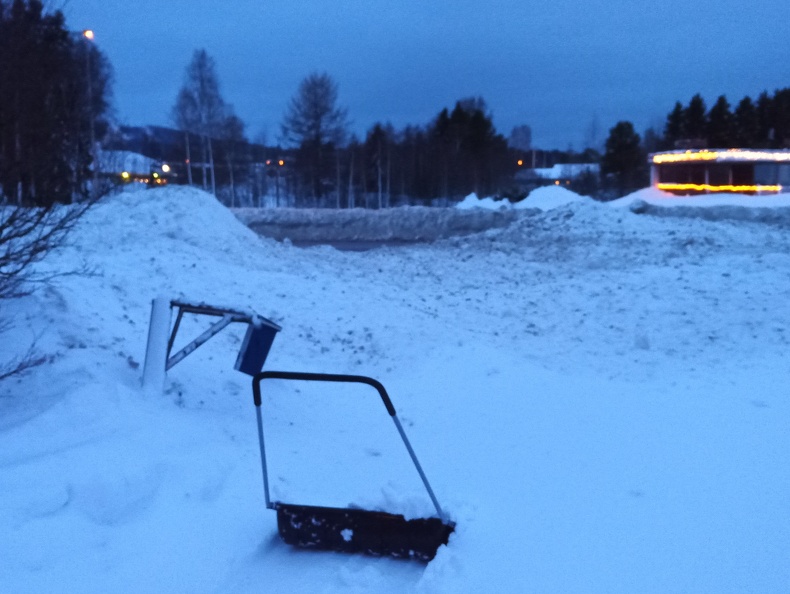
Even without the snowploughs dropping more snow, there’s a limit to how far you can throw snow which a shovels. We got to that limit with giant piles either side of the driveway. The snow can also set hard like rock if you don’t move it in time. If you don’t clear your driveway, you cant get a car in or out. We also cant put a bin out for collection, the post service redirects all your mail, and other parcel carriers might say they cant make the delivery.
So it’s a great idea to sign up to the driveway clearing service of a local vehicle operator. There was great relief in seeing a 9500kg Volvo smashing the walls of snow that had built up. It cleared everything in a handful of minutes.

So with the clearing service, I know I don’t have to worry if there is a blizzard. In the morning I sit happily in bed as the window lights up with bright floodlights. A heavy rumbling rattles the windows, and I know that the driveway will be clear when I look outside. In icy melt conditions they also come and shake light gravel over the surface to prevent icerink conditions.
Winter Tyres
The ice compacts and eventually covers the roads. Everyone has a set of winter tyres that they swap over to. Driving on studded ice tyres gives directional grip, but it’s still an ice surface. Breaking distances are a lot longer – I overshot my driveway multiple times the first year I drove, with ABS activating and the studs scraping on the ice. Pulling out onto the fast main roads is also difficult as a front-wheel drive sends weight slightly backwards with acceleration, reducing the grip on the front wheels and making them more likely to spin.
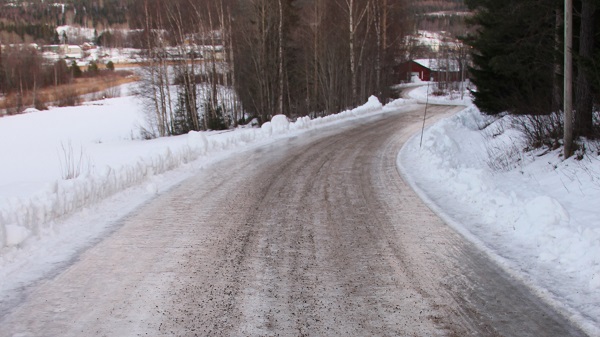
In April you have to swap back and you’ll be fined by the police if you don’t because the studded tyres cause greater damage to the normal road surface than normal tyres. This can cause some friction as sometimes there are winter ice and snow conditions up north, beyond the date given by police. You can pay someone to swap over all your tyres, and they’ll charge about 250SEK (about £18) which sometimes includes wheel balancing also, or you can swap them over yourself.

Keeping the Car Warm
The engine has an engine block heater to prevent the oil freeing when parked. When I park places like an airport there will be an electrical point per parking space. I can connect the car via a socket near the grill and pay a small amount for the heating. The block heater in the engine draws about 400 watts. At the airport the cost is about a euro a day.
In the winter the thinking is that it’s a good idea to either not heat your garage, or to heat it enough that water will evaporate from the car. The thought is either wet snow on the car stays frozen or that it needs to dry off. If it sites wet at about 1C then rust is more likely to develop.
One thing is that there is winter and summer washer fluid. In the winter you use a washer fluid that is rated for the cold temperatures, otherwise the moment you use the washers it will freeze on the windscreen.
Do I Need a 4×4?
Likely not. If you live in a town or large village, you likely can survive fine without a 4×4. It’s a good idea to be friends with someone who has one however. I’ve survived the winters fine in a front wheel drive car with only one issue. I overshot the driveway on the road ice and stubbornly still tried to make the turn. In doing so I put a wheel into soft snow covering a ditch. In wind and ice conditions I tried digging the tyre out and putting a snow ramp under the wheel. I only succeeded in making the wheel spin and digging the car in deeper. Eventually I texted my friend with a 4×4 who came and helped pull me out.
American style massive 4x4s are not common, but they are starting to appear.
General Car Use
Fuel filling is just like the UK. Swipe at the pump, fill the car up, drive off. No weird pump handles like some places in Canada.
Just like the UK, automatic cars exist, but manual cars are much more common. That may change as electric cars become more common.
Just like the UK, people routinely use the handbrake for parking. There’s other countries where they put the car in gear to park and treat the handbrake as an emergency backup only. In Canada someone gently spent quite some time explaining to me that I shouldn’t use the handbrake when parking.
Volvos are massively common. In the UK they exist but in Sweden they are part of the landscape. They are driven by young teens, lowered by boy racers, and used as family cars by all ages. There’s also a phrase roughly “Volvo, villa, vovve” which describes reaching a point in life where you have a Volvo, house, and a dog.
MOT
The Swedish annual car maintenance test is very similar to the UK MOT testing.
I get a letter prompting me to book a slot. There are early morning slots available so I can have a test done before work. I book a day and time online.
On the day I drive to a dedicated test facility. Once there I park outside facing the facility in painted waiting spaces. A large LCD screen that shows registration numbers when it is their turn. Each time, bay doors open and a large LCD screen shows the next registration to be admitted. The inspectors have always been friendly. I go and sit with a free coffee while they inspect and shake the car.
The one time the car failed on something, it was easy to arrange a fix and retest. I texted my local garage and booked in the same week for repairs. I then went and retested the vehicle without issue.
Other Road Users Behaviour and Attitudes
Outside of winter, it is generally like driving in a much more relaxed version of the UK. The standard of driving is good compared to north america. There are roughly the same number of occasional mistakes or crazy drivers as the UK but with less traffic so you encounter them less often.
I like having less pressure. Out of tourist season, up in the north, I can drive 2 hours to the nearest city on the main road and have maybe 10 to 15 car interactions along the way. In the UK it would be roughly that number of interactions per minute which can make driving exhausting.
There is less tailgating than I experienced in Canada. In Canada cars would tailgate constantly. They’d follow a few metres behind you down a hill above the speed limit in pouring rain, but it’s more bad driving than aggression. In the UK someone typically tailgates when they want to pick a fight or bully other cars. There’s a lot less of either in Sweden but you will get the odd impatient driver trying to push you to exceed the limit. There is also more opportunity with less traffic to just pull over and let a tailgater go rush off to annoy someone else.
I have seen someone overtake into oncoming traffic but that was the only time I have seen something that made me think there would be a real accident. One constant that I haven’t seen elsewhere is that when a dual lane main road reduces to a single lane, there is a 400m warning and people seem to save up their crazy overtake for this moment. It’s especially odd when they’ve chosen not to overtake for the past 2-3km of dual road, and there is a lorry in front of you both that they then sit behind, at the same speed that you were both at before, but it happens quite often.

Cars with red triangles on the back, driving really slow…
A-traktors! Just think of them as a mopeds but with 4 wheels. Same arrangement. It lets younger drivers get mobile sooner in rural locations and build up experience whilst reducing risk.
Some of them have curtains and decorations, or custom signwriting. There’s quite a healthy positive behaviour around it.
Cars in the Snow
In the snow many normal car drivers don’t slow down and might push you to do more dangerous things than you would like. It can be a snow blizzard at night, on a dual lane section unploughed 110 kmh road with snow encroaching on both lanes, so that it becomes just two tyre tracks in the middle, and still someone will want to overtake, forcing you both to put a wheel into each snowbank at high speed. Drivers will say it is because they are used to the conditions, but there’s plenty of accidents.
Some people drive without lights, in grey and white cars, in snowfall. Presumably because they can see fine so they don’t think it is important. They are almost invisible at 100-150m. I just leave my lights on dipped the whole time all year round.
Lorries in Winter
My biggest concern in the coldest months is the lorries. I only remember UK lorries being a cab and trailer but in Sweden they are often a double trailer, 25m in length. This recently changed so the EU double-length maximum is now 35m long (roughly twice as long as a UK lorry). The lorries don’t slow down in winter conditions and they travel at the maximum speed for the road. It can be hard in a lighter vehicle on studded tyres accelerating or decelerating to get out of their way. Pulling out onto the road on top of 2inch blanket ice and then seeing one coming up behind you is a problem. The lorries have a culture of aggressiveness that I’ve not seen in other countries.
You also can’t pull off a 80kmh road in a light vehicle on ice without either slowing down substantially or having a slip-road to decelerate on. Slowing down with a lorry right behind you will get you a road rage incident. Taking the corner too fast the rear will lose grip and spin out. That’s also not a normal experience in a front-wheel drive car so might be more unexpected. In dry conditions the same car would normally give way on the front end first in a predictable fashion.
You can outrun them but now you’re breaking the law and travelling fast on solid ice. You cant pull over into most lay-bys as they either aren’t snow-cleared or are too short to stop in, on ice.
Sometimes in January and February when the fast roads are layered in thick ice, its better not to drive or to adjust your route to avoid the fastest roads.
